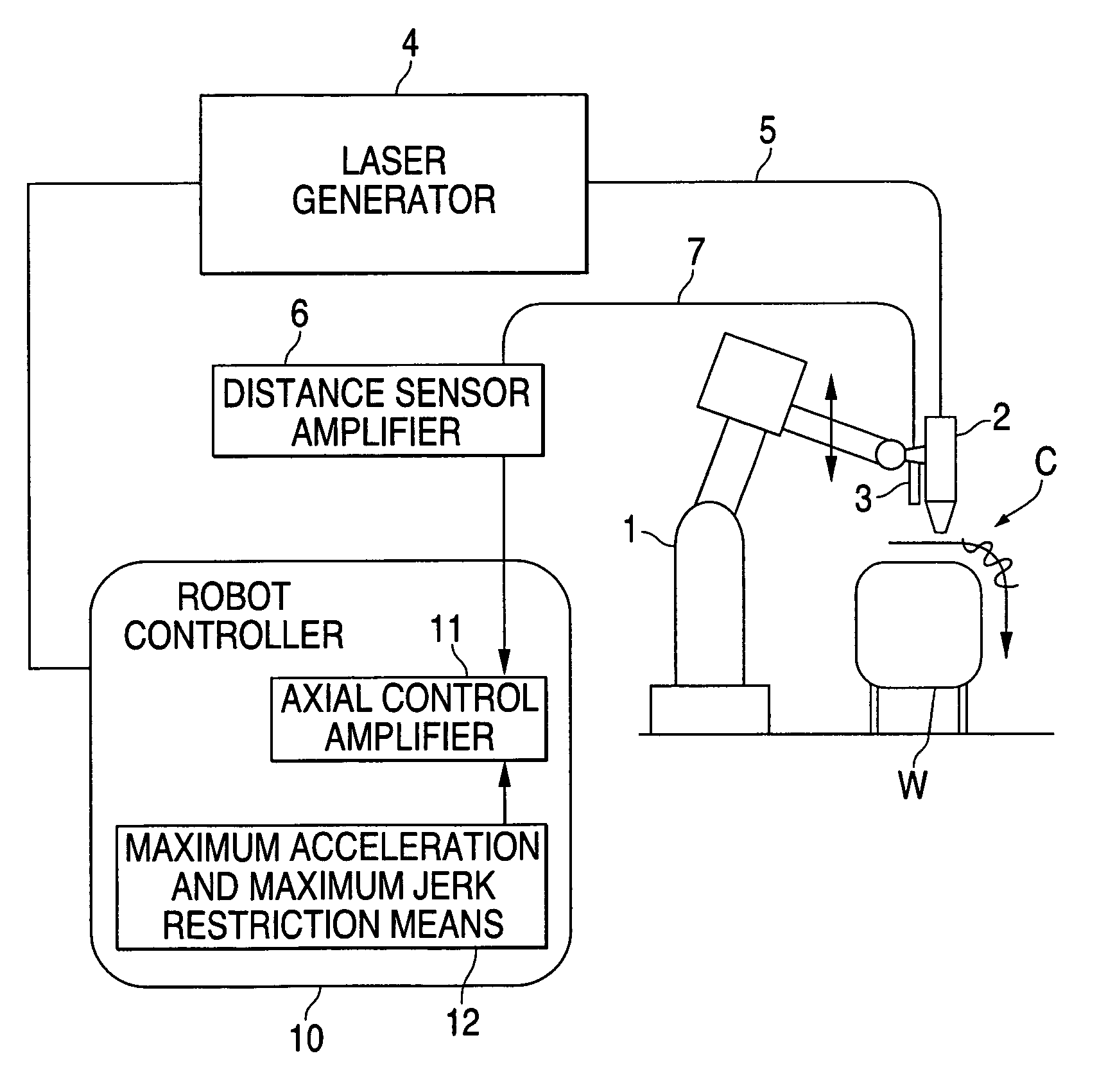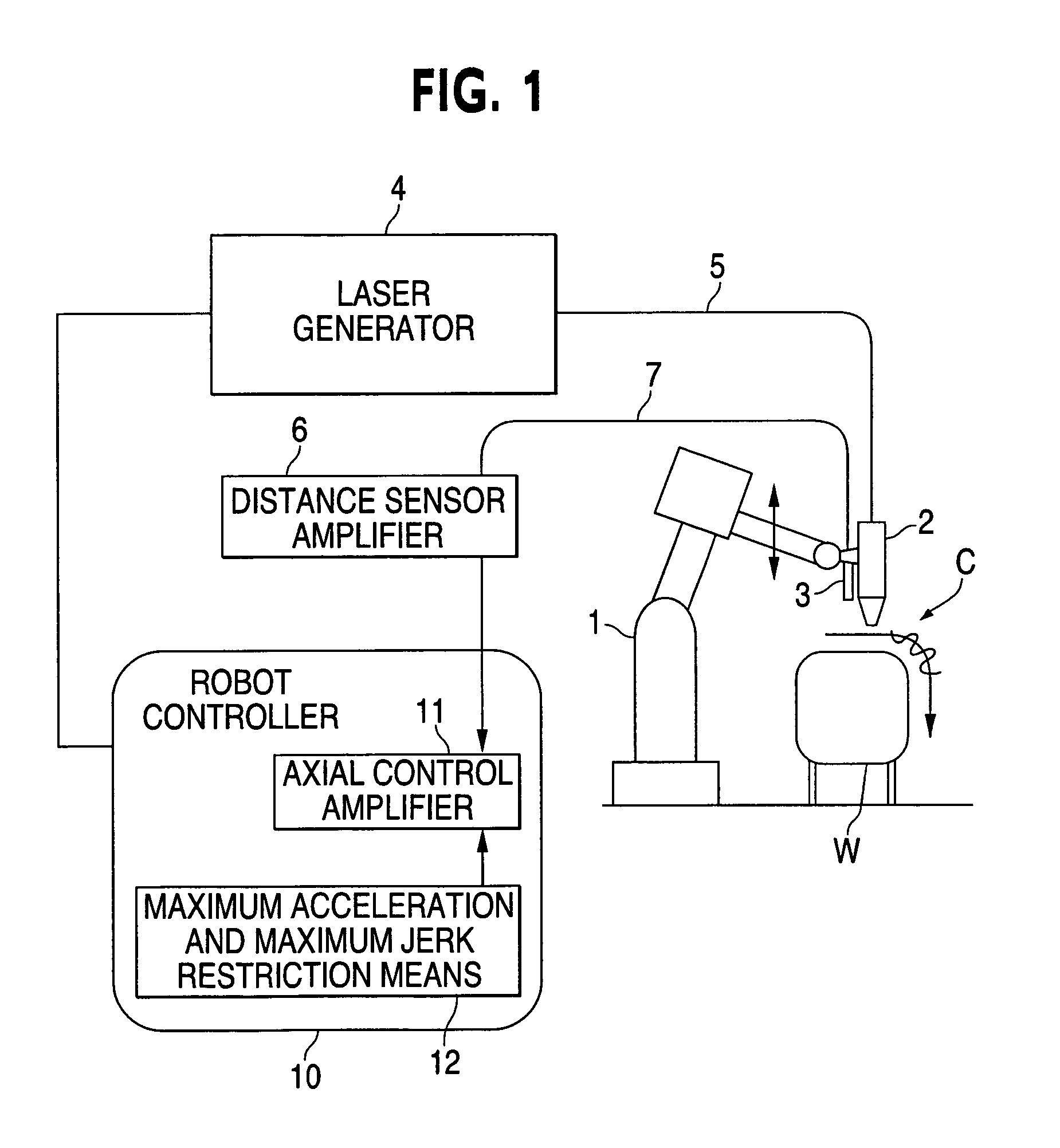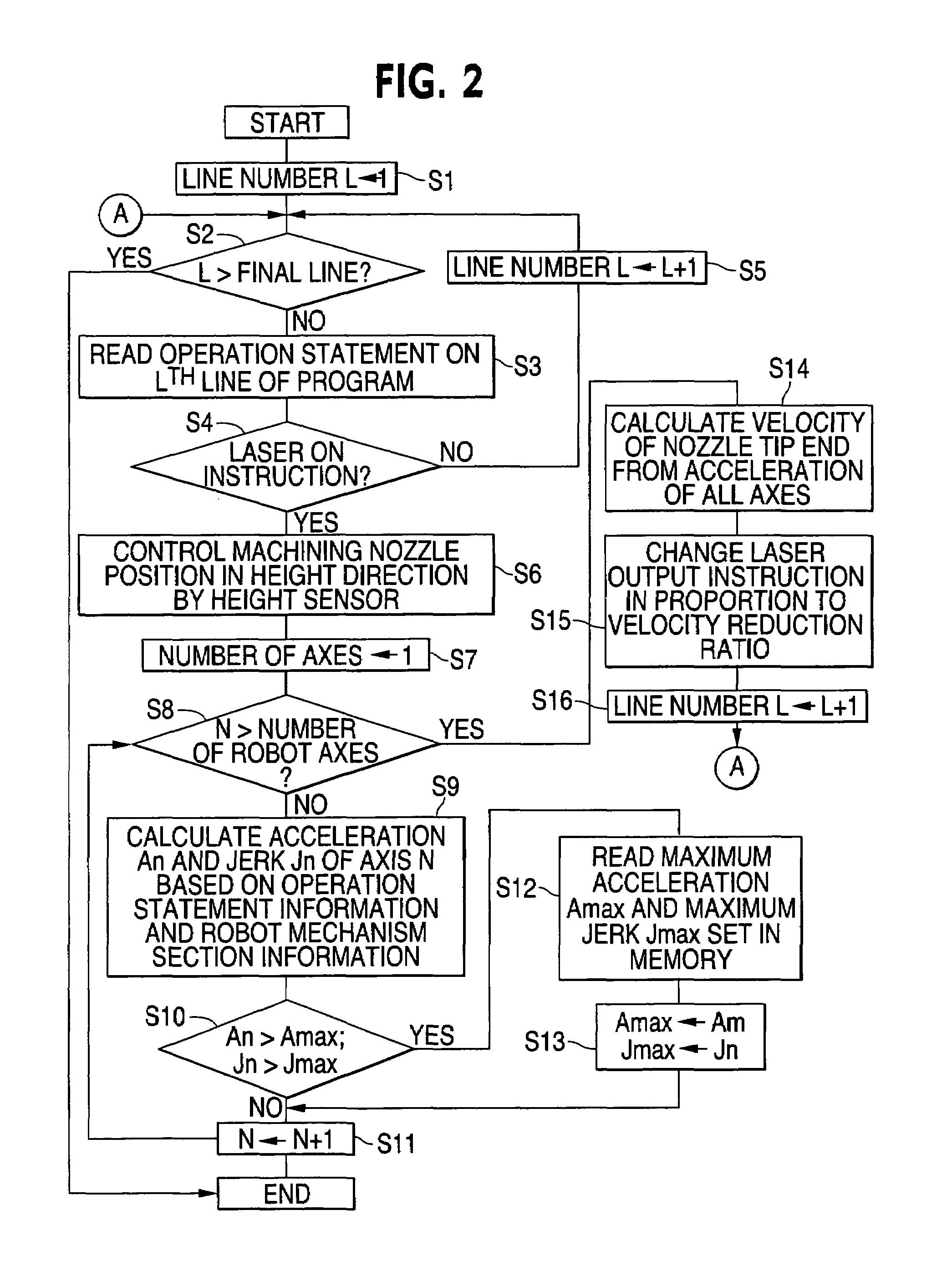Laser machining robot
a laser machining robot and laser machining head technology, applied in the direction of programmed manipulators, manufacturing tools, electric programme control, etc., can solve the problems of inability to accurately control the locus of the tip end point of the laser machining head, disadvantageous time-consuming operation for specifying conditions, and automatic suppression of the possibility of generating vibrations. , the effect of suppressing the possibility of generating vibrations
- Summary
- Abstract
- Description
- Claims
- Application Information
AI Technical Summary
Benefits of technology
Problems solved by technology
Method used
Image
Examples
first embodiment
[0016]FIG. 1 shows a schematic diagram of the configuration of a machining system using a laser machining robot according to the present invention. The system shown in FIG. 1 includes a robot controller 10 connected to a laser machining robot (hereinafter, “robot”) 1 and controlling an operation of the robot 1, a laser machining head 2 attached to a tip end of an arm of the robot 1, and a laser generator 4 that transmits a laser beam for machining to the laser machining head 2 through an optical fiber 5. Laser output ON / OFF control and power control over the laser generator 4 are exerted by the robot controller 10 connected to the laser generator 4.
[0017]A distance sensor (or height sensor) 3 is attached to the tip end of the arm of the robot 1 in proximity to the laser machining head 2. This distance sensor 3 is connected to the robot controller 10 through a distance sensor amplifier 6 by a cable 7. The robot controller 10 controls a distance sensing operation of the distance senso...
second embodiment
[0047]FIG. 4A is a schematic diagram of the configuration of a machining system using a laser machining robot according to the present invention. In this system, an additional axis 8 is provided at the robot 1, and the distance sensor (or height sensor) 3 is attached to the laser machining head 2 itself. This additional axis is controlled in response to the height sensor signal from the distance sensor 3.
third embodiment
[0048]FIG. 4B is a schematic diagram of the configuration of a machining system using a laser machining robot according to the present invention. In this system, the distance sensor (or height sensor) 3 is attached to the laser machining head 2 itself, and the tracer control is carried out by controlling six axes of the robot 1.
[0049]Each of the system shown in FIG. 4A and the system shown in FIG. 4B executes the restriction on the acceleration and the jerk of the robot 1 as described in the first embodiment.
[0050]According to the present invention, the disruption of the locus caused by the vibration generated when the robot is quickly accelerated can be prevented. Accordingly, stable laser machining can be executed even in instances in which the corner is included in the machining route, e.g., for a complicated three-dimensional workpiece.
PUM
| Property | Measurement | Unit |
|---|---|---|
| acceleration | aaaaa | aaaaa |
| moving velocity | aaaaa | aaaaa |
| distance | aaaaa | aaaaa |
Abstract
Description
Claims
Application Information
 Login to View More
Login to View More - R&D
- Intellectual Property
- Life Sciences
- Materials
- Tech Scout
- Unparalleled Data Quality
- Higher Quality Content
- 60% Fewer Hallucinations
Browse by: Latest US Patents, China's latest patents, Technical Efficacy Thesaurus, Application Domain, Technology Topic, Popular Technical Reports.
© 2025 PatSnap. All rights reserved.Legal|Privacy policy|Modern Slavery Act Transparency Statement|Sitemap|About US| Contact US: help@patsnap.com



